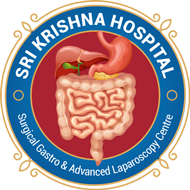What is Pilonidal sinus?
A pilonidal sinus (PNS) is a small hole or tunnel in the skin. It may fill with fluid or pus, causing the formation of a cyst or abscess. It occurs in the cleft at the top of the buttocks. A pilonidal cyst usually contains hair, dirt, and debris. It can cause severe pain and can often become infected. If it becomes infected, it may ooze pus and blood and have a foul odor.
Why Pilonidal sinus occur ?
The exact cause of this condition isn’t known, but its cause is believed to be a combination of changing hormones (because it occurs after puberty), hair growth, and friction from clothes or from spending a long time sitting. The body considers this hair foreign and launches an immune response against it. This immune response forms the cyst around your hair. Sometimes a person may have multiple sinuses that connect under the skin.
The signs of an infection include:
- pain when sitting or standing
- swelling of the cyst
- reddened, sore skin around the area
- pus or blood draining from the abscess, causing a foul odor
- hair protruding from the lesion
- formation of more than one sinus tract, or holes in the skin
You may also experience a low-grade fever, but this is much less common.
How are pilonidal sinustreated ?
A pilonidal cyst is a sac filled with hair and skin debris that forms at the bottom of your tailbone. Infected hair follicles usually cause these cysts to develop.
Initial treatments include sitz baths, warm compresses, and antibiotics. However, if the infection is severe enough, you may need surgery.
The two surgical procedures used to treat pilonidal cysts include:
- Incision and drainage. During this procedure, a doctor will make a cut and drain the cyst.
- Cystectomy. During this procedure, a doctor will remove the entire cyst and the tissues around it.
Post operative recovery
After surgery, your physician might choose to leave the wound open or close it with stitches. The use of stitches may help you heal faster, but there’s a higher chance that your cyst will recur.
The amount of time it takes for you to recover depends on how your surgery was done and if you received stitches. In general, it’ll probably take anywhere from one to three months to completely heal.
Most people can resume their regular activities two to four weeks after surgery.
You may experience some pain or tenderness during the recovery process. This can be managed by:
- taking pain medications prescribed by your doctor
- avoiding strenuous activities
- using a donut cushion to sit on
- not sitting for long periods of time on hard surfaces
Advantages of Pilonidal sinus Surgeries
'Unfortunately, pilonidal cysts do come back after surgery. Studies show recurrence rates are as high as 30 percent.
The cysts may return because the area gets infected again or hair grows near the incision scar.
People who have recurrent pilonidal cysts often develop chronic wounds and draining sinuses.
Here are some ways to prevent a recurrence:
- Follow your doctor’s postsurgical instructions carefully.
- Keep the area clean.
- Shave the area, or use a hair removal product every two to three weeks.
- Keep all follow-up appointments with your doctor.





